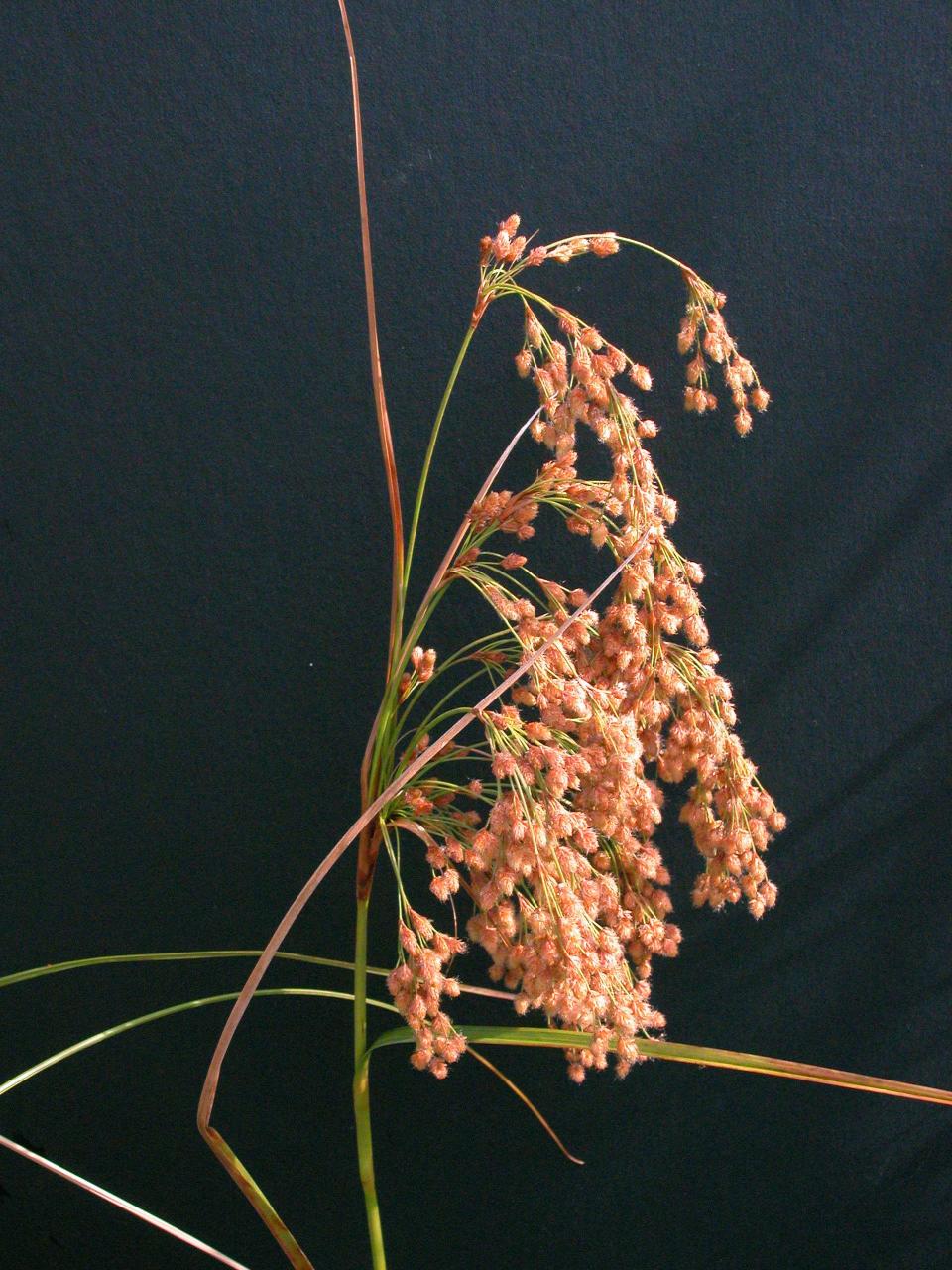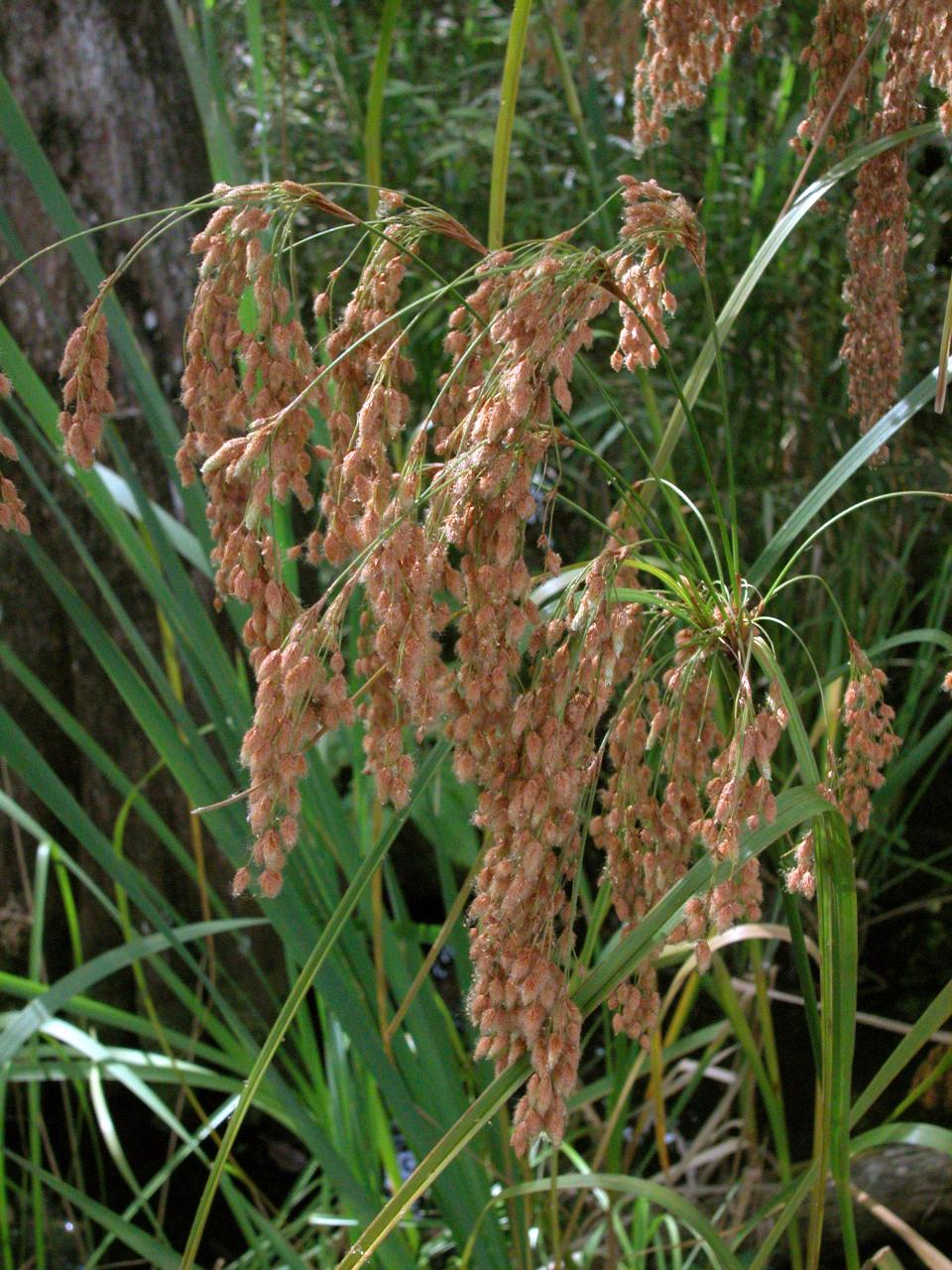Get an edge on identifying grasses, sedges and rushes | Mystery Plant
And now, ladies and gentlemen, for your late summer enjoyment, I am proud to present a plant that is common as dirt — and a member of the sedge family!
You may remember from your first botany class that “sedges have edge,” specifically, sedges are grass-like plants that have stems that are generally triangular in cross section, so that when you hold one, you can feel the edges.

Grasses, of course, belong to a much different family (the Poaceae), and their stems are usually round (or circular) in cross-section, along with the rushes, representing yet a third family (Juncaceae). It turns out that for beginners, sedges, grasses, and rushes can be notoriously confusing in the field, at least before they start blooming.
In bloom, however, the members of these three important plant families are very easily distinguished, as their flowers and fruits are quite different among the three groups.
The sedge family really is a large one, with many thousands of species, distributed all over the world, especially in the tropics, and warm temperate regions, although there are plenty that prefer to grow in cooler climates. Sedges aren’t nearly as important as the grasses, in terms of human economy, and there aren’t many that are used as food sources, other than “water chestnuts,” which are the crispy corms of a certain sedge (Eleocharis dulcis, from Asia and the western Pacific).
Some sedges have been used as a source for paper-making (papyrus) and various fibers and building materials. Others have some value as attractive ornamental plants, and are being used more often in gardens. The sedge family is perhaps best known for a number of weedy species, some of which are quite aggressive — “nut-sedge” (Cyperus esculentus) would be a good example.

This week’s Mystery Plant is a sedge, and it is commonly seen in the Southeastern states. Wool-sedge, Scirpus cyperinus, occurs as a native species from New England to British Columbia, and south to Texas and Florida. It is frequently seen in borrow pits and roadside ditches and other disturbed habitats. This plant is a perennial, growing from solidly-rooted, short rhizomes. The plants sprout elongated, whip-like leaves, and form dense clumps.
The stems are more or less rounded in cross-section, rather than truly triangular, as mentioned above. The tiny flowers are held in clusters in hundreds of dangling spikelets on top of the stem, and each flower is subtended in the spikelet by a tiny brown or reddish bract.
If you tear one of these spikelets apart, you will be able to see the yellowish or whitish, ripening ovary which will eventually develop into a hard, one-seeded fruit (an “achene”). You will probably need a hand lens to see the achenes.
So far, not much truly interesting about this plant. However, every single flower is subtended by a cluster of wildly crinkly, brownish bristles, which together form a cottony brown fuzz amongst the developing flowers. Because of this, some people find this a very beautiful plant, and it has been used with some success (perhaps not enough!) in water gardens.
John Nelson is the retired curator of the Herbarium at the University of South Carolina, in the Department of Biological Sciences. As a public service, the Herbarium offers free plant identifications. For more information, visit herbarium.org or email johnbnelson@sc.rr.com.
This article originally appeared on Tallahassee Democrat: Cottony brown bloom gives wool-sedge is name | Mystery Plant

